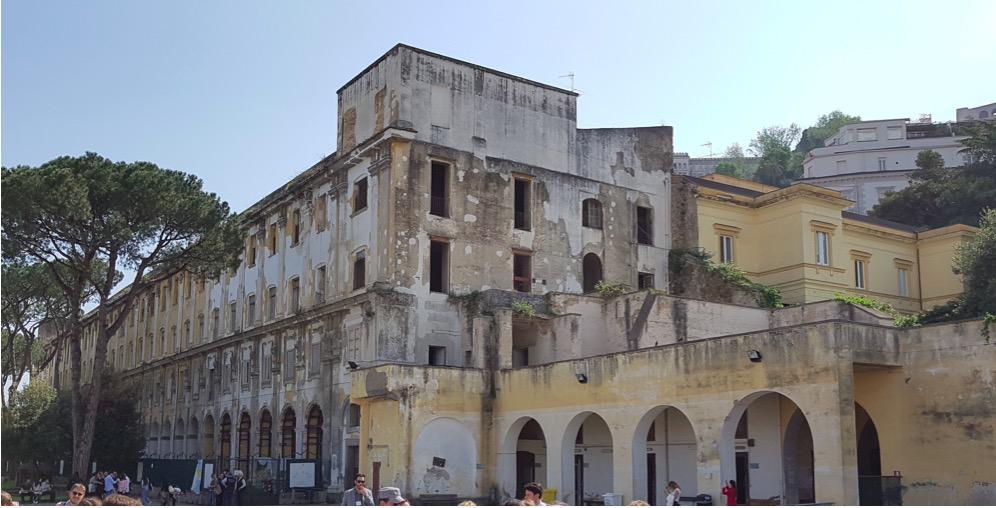SS TRINITÃ DELLE MONACHE COMPLEX, NAPLES, ITALY

PROJECT DESCRIPTION
The city of Naples, based on the urban commons regulation, initiated a participative process with citizens and neighbourhood organisations to reactive the abandoned military hospital to the “Community Hub Trinità – Active Citizenship Incubator”. It involved citizens and interested stakeholders in the analysis of the current situation of the building and its surrounding through site visits. To activate citizens and neighbourhood organisations to become involved, the city made an open call to which citizens and organisations could express their interest in joining the reactivation process and reuse of the building. The call was also used to collect first ideas of potential uses. To envision the future use of the building complex a series of public workshops were organised.
Mapping
To analyse the strengths, weaknesses, challenges and potentials of the vacant building complex Naples organised target group oriented site visits for counsellors, technical departments, architecture students and professors and the general public. Directly after each site-visit each participant had to fill out a short survey on the strengths, weaknesses, challenges and potentials of the building complex, also with regards to the neighbourhood development.
Activating
To engage interested citizens and organisations in the reuse of the building complex, the city of Naples organised a public open call to which interested citizens and organisations could express their interest to join the Local Support Group, responsible for the reuse of the building complex. Interested people and organisations had to express their interest by presenting an idea for the reuse of the building complex, referring to one or more fields proposed by the municipality.
Envisioning
To develop a vision and use ideas for the building complex the city of Naples organised a public brainstorming workshop on “possible and desirable futures” and an exercise at which participants had to write “Letters from 2027”. The letter exercise was about to imagine to return to Naples after a long absence and to visit the complex, finally restored, describing the impressions of what is going on there to a distant friend. In addition together with universities an international design workshop, a master class and a post-lauream course was organised to generate ideas with students for the building complex. All ideas for potential uses were discussed at a public assembly with inhabitants of the neighborhood.
LESSONS LEARNED / RESULTS
43 associations, enterprises, institutions and informal groups or networks expressed their interest by presenting a project, an idea or a temporary use. This has helped in getting preliminary ideas for potential uses. The further involvement of the stakeholders in the envisioning and action planning process has produced a reactivation strategy that is supported by the majority of the stakeholders. This is a good basis for the implementation process. However, â not inconsiderable sum of personal and professional resources were needed to achieve this, in particular for the organisation and moderation of the participative process.
DATA
City information
Population size: 501 th - 1 mPopulation development dynamics within the city administrative limits (at the time of the project): Shrinking
Population development dynamics of the functional urban area (at the time of the project): Shrinking
Website of the city: http://www.comune.napoli.it
Project information
Project territorial scale:
Other specific territoryProject geographical area: City centre
Project/building proportions: Over 1000 sqm; Project Area: No data/not applicable
Project main actors: Consultants, private professionals; City Government; Resident association, group, citizens
Project dominant property ownership: Public
Project development stage (at the time of description): Nearly finished
Project duration: 6 months to 2 years
Project starting date: 2015-2018



